#The heroine's journey
Text
Subplot Romance
Over the years I've created some twitter threads on writing and history and I've decided it's a good time to start compiling and sharing them on this Tumblr. I'm going to tag them "writing".
-
Here's what I've learned about writing subplot romance. (People who write genre romance probably already know this stuff. It's those of us who are mainly leavening romantic subplots into fantasy novels that need this info).
1. Romance = fundamentally character-driven. All internal conflict & internal growth. (Can these two trust each other? Will their character flaws drive them apart?) The more study you put into creating characters and building character arcs, the better your romantic writing.
A romance arc is not the SAME as a character arc, but it 100% NEEDS solid character work undergirding it.
2. Romance needs two ingredients: a compelling reason for the characters to be TOGETHER, & a compelling reason for them to be APART. This forms the conflict in the romance so do not skimp on either.
Eg, a common mistake in male-penned stories: female lead has no compelling reason to want male lead. "He's a good-looking warrior dedicated to winning her throne!" Yeah nah, she's literally surrounded by good-looking warriors dedicated to winning her throne, why's he different?
3. Romance needs chemistry = a believable spark of attraction. Something that blew my mind when I realised it: romantic chemistry =/= sexual chemistry. Sexual chemistry (purely physical attraction) is simply PART of romantic chemistry.
Romantic chemistry is a good deal broader. (Read/watch some good romances to see how chemistry is built by different storytellers. One fave of mine is the Romola Garai EMMA. Peerless friends-to-lovers chemistry. Watch the actors' body language; the way they gravitate to each other; the way their faces light up)
Chemistry tip A: if the driver behind sexual chemistry is lust, the driver behind romantic chemistry is trust. Protag needs/wants someone to trust. It's the way you play with trust/distrust that will create romantic tension.
eg: love interest holds protag's hand. With sexual chemistry, protag simply feels a jolt at the contact. With romantic chemistry, protag feels comforted and trustful - then betrayed when it turns out LI is tracking her pulse to see if she's lying to him (see: MISS SHARP 😇)
Chemistry tip B: if protag is falling for someone, that person should occupy their mind. LI should be mentioned/thought of each scene, even when absent. When present: LI consistently provokes unaccustomed emotion - either positive or negative, depending.
Chemistry tip C: make the characters their best/most lovable/most iconic selves when with each other. Quirkiness, smarts, hilarity. Make these the most fun character scenes in the book & the audience will ship them. Passionately.
4. Build romantic chemistry/attraction through escalating moments of trust and tension. If aiming for happily-ever-after(HEA)/for-now(HFN), then the overall arc is towards greater trust, but you need those moments of tension to give the big payoff scenes appropriate catharsis.
OTOH, if you're writing a tragic/backstabby romance, you need the trust/comfort moments in order to sell the big tragedy/betrayal.
5. Trust, comfort, & happiness are POWERFUL. This is what genre romance thrives upon. Even in dark/spiky stories, the most surprising thing in the story can be the moment when the LI DOESN'T betray the protag. That too can be wildly cathartic. Use it.
6. Just as character-driven skills help you with romance, so if you master romantic writing, you'll be better able to write ALL types of relationship - platonic, friendly, hostile.
OK that's all so far. Two book recs: ROMANCING THE BEAT by Gwen Hayes & THE HEROINE'S JOURNEY by Gail Carriger teach you the rules/expectations of genre romance so you'll know what the rules are for a happy romance subplot & how to break them for a tragic version.
#Writing#writing romance#Miss Sharp's Monsters#Romancing the beat#Gwen Hayes#The heroine's journey#Gail Carriger#romance tropes#writing tip
518 notes
·
View notes
Text
Omega's Heroine's Journey prediction
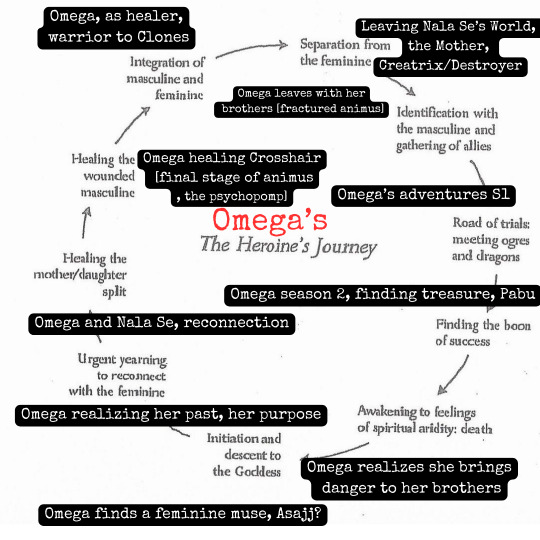
Here's my current prediction for Omega's story from season 1 to season three using the Heroine's Journey as a model.
Separation from the Feminine. Omega leaves Kamino behind, and with it her central mother figure, Nala Se, a woman who is Creatrix of her many brothers, benevolent and ruthless, Creator/Destroyer. Nala Se represents an ambivalent figure to Omega. She is loved by her, but she lived in a cloistered lab, and likely saw Nala Se's ruthlessness, as well as her love. In Murdock's Heroine's Journey, the heroine is unhappy in the world that represents her feminine origins.
Identification with the Masculine and Gathering of Allies. Most of our story of the Bad Batch, is Omega's journey with her younger big brothers. They are aspects of her animus, the masculine side of her, and she identifies with them, learns from them. They are the Muscle Man [Wrecker], Hunter [Literally, the Hunter], The Professor [Tech], and eventually, the Psychopomp [Crosshair]. Allies include Cid, Echo (a Reg brother), Phee, and many more.
Road of Trials, Meeting Ogres and Dragons. Many stories of rancors, dragons, scoundrels, battles. Season 1 and season 2.
Finding the boon of success Pabu. After many trials, (we see bits of vice in Omega at the start of season 2, a little of the potential for avariciousness we see in Jango and Boba, mostly ameliorated with influence of her brothers and the old Serennan man). But Pabu is the success, the utopia well-earned, a life with her brothers.
Awakening to feelings of spiritual aridity; death The life of adventure with her brothers, brings Omega the absence of one brother striking off independently, the other brother dead (maybe). Season 3, Omega will realize that her life with her brothers that she emulated and desired leads to their danger. She will question herself and what she means to them.
Initiation and Descent to the Goddess Omega will meet a Dark Shadow of herself--Emerie, the version of herself raised by a malevolent father figure, Dr. Hemlock. He is neither the benevolent paternal figure of Hunter, nor the neutral Creatrix like her mother. Dr. Hemlock is a malevolent Creator/Destroyer and perversion of that mythic figure. Omega will come to understand her Shadow in Emerie, and what could have been an aspect of herself down another path. In addition, she will also meet the Goddess that can help reconcile her place in the galaxy, and her place. This could be represented by Asajj, a woman who has been raised and tutored by multiple people, kind [Jedi] and dark [Sith], and found her own way, her own power, not completely defined by simple dichotomies, embracing what she has learned of Jedi, Sith, Witches.
Urgent yearning to Reconnect with the Feminine Omega will revisit what it means to be Nala Se's Creation and Daughter, to be Emerie's sister. That Feminine is represented in this story by cloning itself, and Omega's former (and current Mt. Tantiss) life of medical research of being assistant and aide to Nala Se -- the life that had been intended for Omega. This does not mean Omega will be Nala Se's assistant in her future adult life. But it does mean reconciling with her Mother Figure's legacy of the clones, and how she can help them herself, using her own knowledge gleaned from working on Kamino and on Mt Tantiss.
Healing the Mother/Daughter Split We have never seen Omega and Nala Se hold a conversation with each other. It will be time for a maturing Omega to confront her Creatrix, to understand or reconcile her ambivalent feelings towards her. This may also be represented in having EMERIE, Omega's Shadow, reconcile with Nala Se, the Mother figure she might perceive as having abandoned her to Dr. Hemlock.
Healing the Wounded Masculine This was always going to be Crosshair. He represents the psychopomp, the final state of the Animus, the masculine that is the guide, who has gone to death, and out of it. He has been symbolized by the Ice Vulture [remember the sacred symbolism of the vulture], and Joel Aron talked about the "angelic" lighting above Crosshair in his cell. Angels and vultures are all psychopomps. Omega will heal her inner psychopomp, the masculine guide, the part of her broken masculine, and in need of flying again, soaring above with sharp eyes.
Integration of the Masculine and Feminine Omega's final stage in the Heroine's Journey. She will combine and integrate the positive Masculine in her life (of which there is much!) of her warrior brothers, that have helped her to reach out in the world and fight, with the Feminine of her origins, the clever clone, assistant to the Creatrix of them all. Like Nala Se, she can be clever creator and destroyer (she was trained to do Nala Se's work after all), but she will destroy what harms her Mother's creations. She is the Omega, the last Clone. She is the Legacy of Jango Fett, a man who gave his own blueprint to create millions of doomed boys that will destroy and be destroyed in turn, and the Legacy of Nala Se, the woman who used that DNA to create them. Jango and Nala were always mirror characters in the story--both seemingly dispassionately, created millions of doomed children for a war machine. Yet neither were wholly evil, both loved fiercely and were/are honorable. Both loved one clone (the Alpha, and the Omega, respectively). Omega will embody the positive aspects of both these complicated legacies.
#the bad batch#star wars#tbb omega#nala se#tbb crosshair#emerie karr#The Heroine's Journey#The Bad Batch meta#tbb#tbb asajj ventress#asajj ventress
61 notes
·
View notes
Text
The heroine’s journey begins with “Separation from the feminine” and ends with “Integration of masculine and feminine.”
Maureen Murdock, The Heroine's Journey: Woman's Quest for Wholeness
4 notes
·
View notes
Text
Ich denke dieses Buch – "The Heroine's Journey: For Writers, Readers, and Fans of Pop Culture (English Edition)" von Gail Carriger
könnte dir gefallen. Jetzt kostenlos lesen: https://amzn.eu/0KVivBu
@cal-daisies-and-briars ... Here it is, I butchered the author's name uwu...
5 notes
·
View notes
Text
I have a feeling that the purpose of my spiritual awakening is for leading me and guiding me into my life's purpose. My spiritual awakening is also mixed with the heroine's journey, they intertwined.
In other words, I'm awakening to the essence of the divine feminine and its value. My spiritual journey is about working on healing the dark feminine and the unbalanced ego. It's about understanding how those two opposite forces, feminine and masculine, complement each other and create balance within. It's about learning how to express the light qualities of the divine feminine within toward the outside world. It is about feminine empowerment and its development.
#my spiritual journey#my healing journey#my thoughts#personal post#divine feminine#my learnings#the heroine's journey#life purpose#spiritual awakening#dark feminine#ego
3 notes
·
View notes
Text
To people smarter than I am, what is the archetype of a Scarlet Witch-type character in mythology/literature? Is there an archetypal figure or name for a female character with these immensely powerful, reality-changing abilities who is unstable?
Because I keep seeing unstable yet powerful female characters like this (Scarlet Witch, Imogen from Critical Role, and Dark Phoenix, etc.), and I really want to know the mythic origins of this type of character. What is her arc and purpose in a narrative? Is she always a tragic heroine? Is she present in mythology? What is the purpose of her story?
Any thoughts on this would be great!
#mythology#scarlet witch#archetypes#meta#analysis#the heroine's journey#the hero's journey#myth#literary analysis
12 notes
·
View notes
Text
Perhaps my hottest literature take is that the heroine's journey is misunderstood. Wildly so. Like, they're completely off the mark so much if the arrow flew backwards they'd hit the bullseye.
Because the stories I've read with female protagonists *that were written by women* do not involve rejection of the feminine or disilluisionment with the world, they involve a girl (oftena girl, sometimes a woman) who's life is controlled for her by other people finally reaching a point where she has to make a critical decision *that is her decision*. It's about stepping into her own agency, her own power if you will.
I see this most clearly in The Hunger Games. Both in the first book -- it's Katniss who defies the Capitol at the end by threatening suicide, the one little piece of power she has left to herself -- and at the end of the series with her choice of who to shoot. But also with Lessa in The Dragonriders Of Pern, and Feyre in A Court Of Thorns And Roses. Heck, Jupiter Ascending has this too -- Jupiter's life up to that point has been decided by everyone else, until she declines to sign Earth's death warrant.
It even shows up with male characters who are written by women. The Underland Chronicles has a lot of those themes. Harry Potter, even. I think people have gotten confused because they've drawn on female characters that have been written by men, and hence typically from a male perspective.
The heroine's journey is about the heroine coming into her power and being a person in her own right.
#literature#literary criticism#the hero's journey#the heroine's journey#the hunger games#suzanne collins#stop getting your ideas about femininity from men#admittedly i have an embarressing small sample to draw from#but it shows up enough times i think i'm onto something#and it fits with a lot of critiques made about how society socialises girls#so yeah
6 notes
·
View notes
Text
KH Spec: Princess of Heart as Stars, part 5/?
Before looking into Belle & returning to Kairi, there are still aspects of Princess Jasmine that are hugely relevant to identifying how past & future members of the Seven Lights match up thematically. Part 4 began that process by establishing how the implicit themes within the stories of Snow White, Cinderella & Aurora were made explicit through Jasmine's ability to verbally express what they (due to the expectations of their then-contemporary audiences, due to their lack of consistent safety) could not.
Thusly, Jasmine establishes what themes tie the Seven Lights together & what to bear in mind when speculating on future candidates for the roles. Jasmine's unique ability to embody & express each of the following themes (a result both of the era she was conceived for & who Jasmine is as a character) is likely why Agrabah continues to play a role in each Kingdom Hearts game despite its World's "story" having been completed. Before returning to the remaining members of the "Original Seven" Lights, allow me to lay out the thematic patterns of ALL princesses.
The Themes that Connect the Seven Lights are the following:
the ability to Know One's own Heart, to Imagine the Impossible, to Dream: this is the theme of "Dreaming" and is often represented by Hearts.
the ability to Believe in those Impossiblities, to have Faith in others, to be Hopeful in even the most dire of circumstances: this is the theme of "Wishes" and its symbol is a Star.
the ability to remain Curious about the World & about other people with genuine interest, Without Ill Intent: this is a theme of both Innocence & Kindness but is ultimately one of "Curiosity". It is represented by having Animal Companions and by looking to the Stars of a Night Sky.
the capacity to Love Others wholly & truly, to Inspire Loyalty & love in turn: this is the theme of "True Love" and is represented by acts of Self-Sacrifice and Redemption.
the ability to achieve Miracles, through the strength of Love, Wishes & Dreams: "Miracles" are acts of Resurrection & Magical Transformation. The Power of Awakening is a form of "Resurrection".
and, finally, to be one of the Seven Lights is to be in a state of "Hoping": to continue "Dreaming" and otherwise hold close those seemingly impossible "Wishes"; for that "Curiosity" to go unsated; to "Love & be Loved" with all the potential needed to achieve "Miracles"... the Lights must remain in states of "Hoping", continuously channeling their faith and Love but the realization of their Penultimate Shared Theme out of reach. This "Hoping" manifests as Light and is the guiding Theme for this series of speculation.
this is the theme all others lead to, the theme that all others seek to achieve: "Freedom". While many of the Princesses needed Literal Freedom of Movement, the thematic "Freedom" is one of Leaving Childhood: this is symbolized by "Happily Ever After". Visually, "Freedom" is symbolised by Awakening, Weddings, "riding into the sunset" or otherwise Crossing The Horizon.
The Light of "Hoping"
Without going down the Rabbit Hole of MoM's Mysterious Black Box (which I have previously speculated on), "Hope" is considered both a Gift & Curse in the myth of Pandora's Box.
It is a Gift: it allows people to continue trying in the face of failure & adversity.
It is a Curse: it is an ongoing, thankless effort that can lead to self-destruction.
The Seven Lights are key to the continued existence of the KH Universe in the absence of Kingdom Hearts: the Lights act as Seven "Substitute" Stars for that single, all-powerful and Absent "Sun" (though it DOES look more like a "Moon" in box art).
A Relationship With Time?
To be a host for Pure Light seems to require one's life to be suspended from change: in the case of the Disney Princesses from the Original set of Seven, their Stories & entire Worlds seem to have looped over & over, even before KHX, to keep these Primcesses ever between "Doom" & "Happily Ever After".
Assuming that this was deliberately achieved, the Static Worlds of the Disney Princesses served to protect the Worlds at large to remain in the Realm of Light... at the expense of the Seven Lights themselves, & their respective Worlds with them. This is only speculation: Melody of Memory introduced the concepts of "Unreality" and "Realms of Fiction", while the Mass Crossover nature of the KH series enables many versions of reality to exist simultaneously & in each other's stead: I have assumed the Princesses were kept in timeloops because cutscenes from KHUX seemed to imply that Maleficent became self-aware of such a phenomena & because none of the Disney Princesses met in BBS seemed any younger than they were in KH1. This could just as easily a result of their Worlds falling to Darkness shortly after BBS & by the methods Maleficent employed to capture them. Time Dilation or Time Travel outright are other plausible explanations.
"Passing The Torch"
With this idea of Lights being contingent on "Hoping" as an ongoimg effort, it makes sense that Six of the Original Seven Lights could (& would want to) "pass on" their roles: it was not that their natures changed, it was their circumstances that did. With the Princesses now Self-Aware, the threat of Maleficent gone, the Worlds regaining a Kingdom Key-Wielding Hero... the Princesses Snow White, Cinderella, Aurora, Alice, Jasmine & Belle could move on with their lives past their Stories.
It is also this theme of "Hoping", something present & ongoing rather than the "Freedom" that their hopes build up to, that explains why characters that otherwise "match" the qualities shared by the Seven Lights (such as Ariel, Aerith, & Sally from Halloween Town) are not Lights themselves: their Worlds continued to experience "time" and their "Hope" could transform into "Freedom", the theme all Lights ultimately hope for.
In Part 6, the conjecture on time & "hoping" will finally address that Belle I've been neglecting and, assuming I do not again become Distracted, the nature of Kairi as "Once & Present Princess" will be explored. Part 7, hopefully, will tie everything together and let me finally share my theories on who could join Kairi, Rapunzel & Anna as the "New Lights".
#kh theories#kh spoilers#disney princesses meta#princess jasmine#princesses of heart#princesses of light#literary themes#the heroine's journey#symbolism in kingdom hearts
1 note
·
View note
Text

finally saw Lisa Frankenstein
SPOILERS BELOW
i love that this movie is about true love and the writing has no compunction about needing to pretend like true love has to be between moral people - soulmates can be kind of selfish assholes who are nonetheless absolutely perfect for each other and tender and good to each other
and i love, after choking on so many heroines who are so pure it's inhuman in recent YA (which I largely only read for canon f/f) for Lisa to just be... so id-tastic and her story to be driven by the intense feelings of teenage girl coming-of-age stuff that gets prettied up and erased
she was internalizing her pain the way a good girl is "supposed to" -she was hurting so much that she wished she was dead with him. instead, he comes to her and they BOTH come more and more alive as he kills the people who hurt her. in increasingly "unfair" ways because it's not about right & wrong
he's kind of her dark side, speaking to and expressing the things she's shoved down inside along with her will to live - as he acts those things out, as she is complicit and eggs it on, covering for him and feeding him the attempted rapist as a victim, her will to live comes back
but they don't do the "maleficent" (and the whole "bad girl but in a safe way" kind of story) thing of making Lisa's dark side "safe" and her only fairly getting revenge - the darkness the Creature speaks to and acts out is not fair, it is not safe or contained.
instead of internalizing her pain, Lisa shares in externalizing it and making other people hurt and she blossoms into herself. and who she is is a bit cringe in the best possible way? she's embracing her own life energy, or own crazy selfish lustful weird set of desires.
it's about Lisa's feelings and what she WANTS, morals enter nowhere into it. except when it comes to Taffy - the one person who really tried to love her at her most broken. everyone else abandoned Lisa emotionally--including her father--but Taffy tried to be there, as awkward as that could be at times
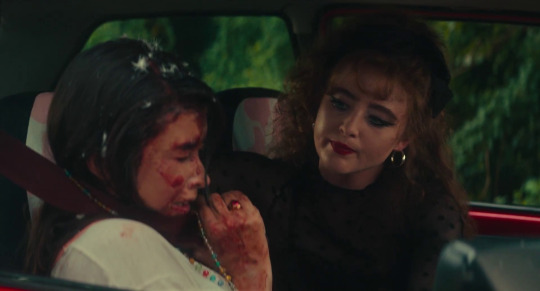

speaking of which: Taffy and Lisa make an interesting contrast to Needy and Jennifer from Jennifer's Body (also a film by Diablo Cody and she says they both take place in the same storyverse). both Jennifer and Lisa decide that what makes them feel most alive is embracing their inner monster, but Taffy doesn't go all "i have to kill the beast" the way Needy does. i like this much better. Taffy is wearing Lisa's mom's rosary at the end and, by doing so, accepting Lisa's "I love you" despite everything Lisa did. whereas Needy ends up ripping off the BFF necklace and rejecting Jennifer's love. In my mind the two films are a tale of two necklaces now lol - one where the "good" girl rejects the monster girl and the other where she accepts that love and carries it with her.


#lisa frankenstein#my meta#monster girls#monster romance#lisa frankenstein meta#Lisa's journey reminded me a lot of Heathers (1988) in that the male love interest is the expression of the heroines dark side imo -#unlike Veronica Lisa doesn't want to put limits on her dark side. The only one she sets is that Taffy is off limits. Everything else is ok
91 notes
·
View notes
Text
Love spotting the heroine's journey in film & hoping to see it in barbie
#video#tiktok#tiktoks#movie#movies#film#films#barbie#barbie movie#barbie the movie#hero's journey#heroine's journey#writing#jstoobs
314 notes
·
View notes
Photo

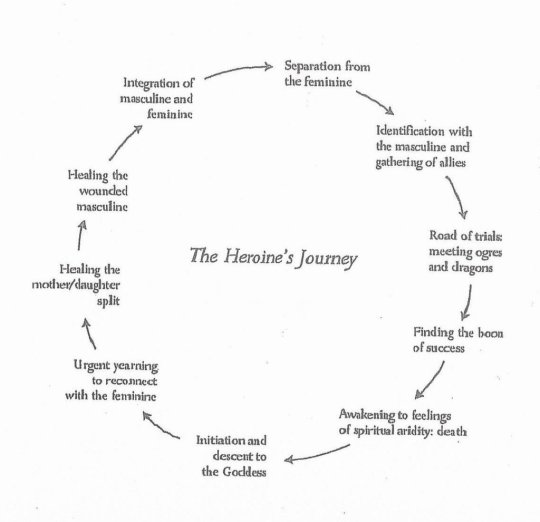

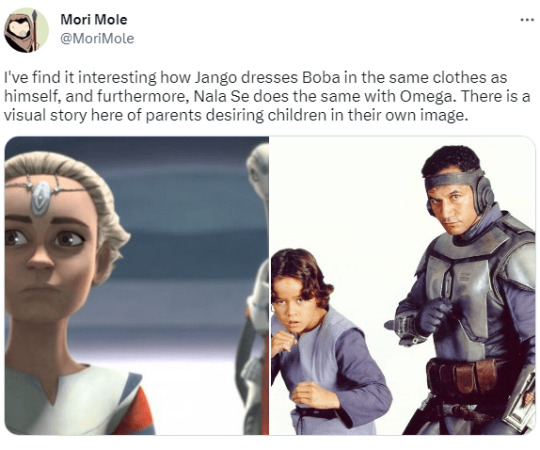
(via Omega in The Bad Batch Season 3: The Heroine's Journey)
#the bad batch#omega#the heroine's journey#star wars#emerie karr#nala se#tbb season three#omega's really doing that journey
21 notes
·
View notes
Text
Why Namor x Shuri makes sense in terms of story structure
So if we go off context, Nashuri was already planned by the writers, as seen in interviews and the og script. Which isn't surprising because viewers picked up on their chemistry and romantic undertones in the movie already. The only reason this was changed is because they wanted to focus on the theme of grief and dealing with loss. Which has been the main theme for phase 4 in general since we're moving on to new heroes.
Also not sure if people are aware of this but the choice to kill Ramonda was more or less a last minute decision by Ryan. Angela only agreed to it after Ryan brought up how often it is for characters to come back.
So this could mean Ramonda's coming back to life or will continue to make appearances. If she does come back to life this more or less weakens the "but he killed her mom!" Argument.
Now let's talk about Shuri's story and Namor's role in it. Because at the end of the day this is Shuri's story.
Shuri's story in WF is her journey from childhood to adulthood. Tenoch has said this is his favorite thing about her story.
In the beginning she is a girl by the end she is a woman.
The particular kind of story structure Ryan used is called "The Heroine's Journey" a popular method to use in storytelling with female leads.
You'll find similar stories following this method in movies like "Star Wars, Labyrinth, The Hunger Games, The Wizard of Oz etc."
"The Heroine's Journey" is a female version of "The Hero's Journey" which is used for male leads. T'Challa actually goes through his hero's journey during "Civil War" and "BP" so im not suprised Ryan used the female version for his sister.
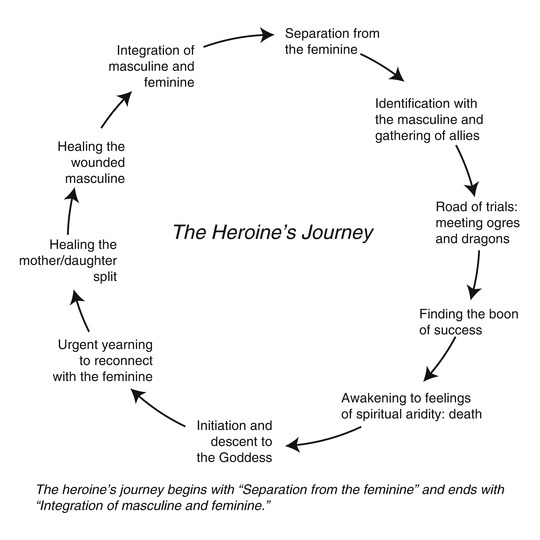
If you look at the structure of the heroine's journey Shuri pretty much hits all of these.
Distancing herself from her mother, venturing out of Wakanda (both in America and in Talokan) aka leaving the nest, and having her time to shine.
Both the hero and heroine's journies are a method to mature your lead in a way that makes sense and is relatable since hey, we all gotta grow up some times.
Also a subtle thing Ryan incorporated was how both Ramonda and Okoye treat Shuri like she's a child while Namor treats her like an adult, because she is.
Now something that is not always included but is common in both, is the hero or heroine's being presented with sexual incitement, at times for the first time. This signifies them coming into sexual maturity which is why you won't see it in every story or may just get subtle hits of it.
Now if it wasn't obvious Namor is ment to be Shuri's expirence with sexual enticement. Possibly her first encounter since we don't know her history.
And this isn't a "maybe" situation he literally just is. Firstly, this role usually is presented when the hero leaves the nest, not to mention Namor takes up every single trope of this role.
-Invades the hero's space (hut scene)
-whispers to them (again hut scene)
-touches or caresses them (First holding her hand then putting his mother's bracelet on her)
-shows them something new and exciting (Talokan)
-Is usually older then the hero (20s vs 500)
-Often times wears clothing that is either tight fitted or very little clothing (bro is literally walking around in nothing but jewelry and booty shorts)
Secondly, sometimes you'll straight up get subtle hints and/or introductions of sex it's self.
-In Star Wars there's a scene where Leia has to sit on Han's lap and the ship starts bouncing up and down...
-Again, in Star Wars Kylo Ren wipes his mouth which we see has water on it after meeting with Rey through the force...
-With Shuri in Namor, their fight has a weird amount of grappling and holding, not to mention the back scratching...
Namor treats and speaks to Shuri like she's a grown woman. He doesn't handle her with kid gloves like everyone else, he respects her as an adult who can make her own decisions.
In a dark sense even when it comes to either raging war after Ramonda's death or the alliance. He leaves it up to her to decide.
Also Riri, just isn't this to Shuri. This is not to say people can't ship it cause you can ship whatever you want, their all fictional. But Shuri refers to Riri as "a kid", "a child" or "a girl" depending on what translations you watch. This is to show the audience that Shuri does not view Riri as an adult. They're confirmed to have a sisterly bond. Shuri lost a sibling and gained a sibling.
But back to Namor, he also is noticeably kinder to her then he is to literally anyone else in the movie besides his people. Not to mention it's canon that he finds her charming and interesting. He also likes her smile.
It's confirmed by Ryan that he never wanted to kill her even during their fight which some fans noticed, he never tries to kill her even when he has an obvious chance.
And lastly, he sees Shuri as an equal by the end of the movie, showing he has respect for her as a protector of her nation and possibly even views her as a god now but we have to wait and see on that one.
As quoted by Ryan, Namor is ment to be a Peter Pan archetype and when you think about it he really is. He's black and white way of thinking is very childish, he's incredible stubborn, he's arrogant and cocky, yet at the same time, curious and charming. Like Peter he's a father to his people (he literally refers to them as his children) and their sole protector.
There's innocence to his character that's very compelling and shows how young he is in mind.
-he collects (maybe steals, very Killmonger of him) Mayan artifacts from the surface since he never got to see Ancient Maya.
-speaking of collecting things, he even collects random surface world stuff. He has 2 gramophones in his hut, which he most likely got from a ship back in the day.
-he's suprised and charmed by Shuri's kindness. Which makes session since she's the first surface person he's ever spent time with.
-and hey, he got his love of drawing from his mama.
Now what does all this mean for Namor and Shuri in the future? Well for one you got a good amount of back up for them no longer being enemies.
1. Shuri's heroine's journey is over now.
2. Namor was the one who forced her into womanhood.
3. We concluded the story at her finalizing her grief
4. It's canon that Namor was humbled by Shuri after their fight.
5. Wakanda and Talokan will be working with each other.
6. Namor may play a mentor like role with Shuri
7. Dispite many romance scenes being removed they still chose to keep enough hints for people to pick up on.
8. Their fight is described as "intimate" by both writers.
9. Namor and Shuri are described as "two sides of the same coin" and "twin flames" (these are the same descriptions that were used for Rey and Ben Solo in Star Wars)
Why does them having a possible relationship make sense? Well the most basic answer? They're the only two people that can understand what the other is going through.
Their both protectors of great nations that are centered around a resource unique to their land and have a culture and ancestry untouched by colonization. They both know grief of losing people they love. (Namor's mother and his two handmaids, Shuri's brother and mother) Their both EXTREMELY intelligent. (Namor build a vibranium sun underwater and I don't remember where I read it but he learned English in a week.) They both find each other interesting. They both see each other as equals. They both have alot of growing to do.
So will they have some kind of relationship? Most likely. Will it be romantic or platonic? Who knows. But we know they won't be enemies so we have to wait and see.
#namor#shuri#shuri udaku#namor meta#shuri meta#wakanda forever meta#wakanda forever#black panther wakanda forever#black panther#nashuri#namuri#story analysis#heroine's journey
211 notes
·
View notes
Text
I've been on the heroine's journey without even realizing:
The call for finding my identity. Reclaiming my lost feminine energy and masculine energy. The dark night of the soul. Feminine spiritual awakening. Healing, inner working and integrating my inner being; an inner quest. Reconnecting with my true self. Merging divine feminine and divine masculine to live in divine harmony - wholeness. Balance from the divine union of the feminine and masculine. Reclaiming lost personal power to live my life purpose. And eventually helping women to do the same.
#my healing journey#my spiritual journey#the heroine's journey#divine feminine#divine masculine#personal post
0 notes
Text
what if i killed myself rn

#pau liveblogs#act 5 part 2#rose lalonde#mom lalonde#oughhhhh just. rose feeling like her mom was above death. despite having experienced death before (jaspers) that didnt seem like something#that could happen to mom ((an Adult. her Adult.)). and that raising rose was some kind of chore to her. something you guess you have to do#but youd rather be elsewhere. THAT BARBIE QUOTE ABOUT MOTHERS STANDING STILL SO THEIR DAUGHTERS CAN LOOK BACK AND SEE HOW FAR THEYVE COME.#rose thinking that her mom was the heroine and she was just part of the journey and not the other way around. I ALWAYS UNDERSTOOD THAT#((that mom was sort of her sister too)) SOMEHOW. i am so going to die
52 notes
·
View notes
Text
Mythic Symbolism in the Mayfair Witches
a mythic and psychoanalytical thread exploring themes of: alchemy, star lovers, fairytales, greek myth, three fold goddesses, and beastly grooms within the amc series ‘anne rice’s mayfair witches’
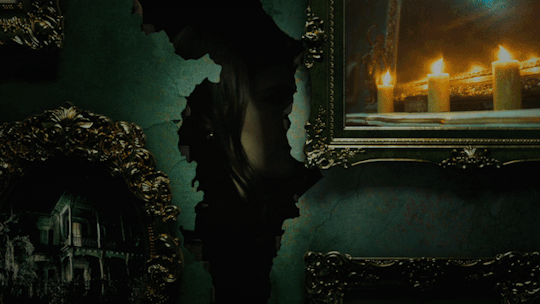
*disclaimer*
This post will be split up into multiple parts as it is very lengthy.
The point of this post is not to discuss how the show adapts the source material, but instead how the show stands on its own, utilizing psychological and mythic motifs in its plot and character journeys.
For those who want to see the show, it is available on physical DVD and Blue-Ray as well as streaming. The entire eight episode first season is available on AMC+ which you can get a free trial for through Prime Video channels.
A second season has also already been green-lit. However the first season ends on what I would consider a very satisfying note.
Part One, Part Two
————————————————————————
THE TRIPLE GODDESS: MAIDEN, MOTHER, CRONE
Aside from Rowan’s story, there are two other Mayfair women whose lives we follow. The progenitor Suzanne in the 17th century, and Rowan’s biological mother Deirdre. While together they each represent one of the goddesses, we also see each of them move through these roles in their own journeys.

The concept of the triple goddess also has strong roots in the myth of the Greek Fates and the Norns of Norse myth. Both represent the Birth/Life/Death cycle. This archetype is also strongly associated with Persephone, Demeter and Hecate, or Artemis, Selene, and Hecate.
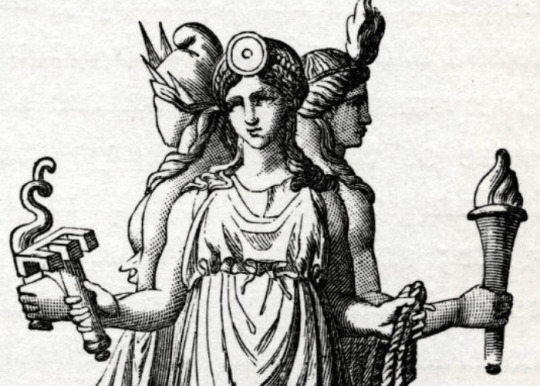
Each of these Mayfair women has a role directly associated with life and death. For example, Suzanne is a midwife whose work, like her aunt says, is not just curing people but also helping give them a good death.
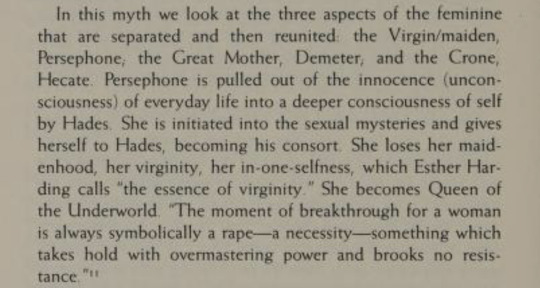
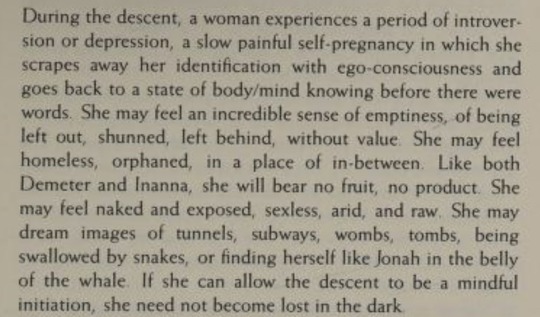
Rowan, like Persephone as Maureen Murdock puts it, is pulled out of the innocence of everyday life into a deeper consciousness of self by Hades. Or in this case Lasher.
Furthermore, Deirdre like Demeter is overcome with grief and surrenders to her sorrow, when her daughter is taken from her. However in this instance her daughter is taken away by Carlotta.

Suzanne is like Hecate as Jean Shinoda Bolen describes, a guiding companion force. When Rowan meets a crossroads in her journey at the Witching Hour, Suzanne is there to guide her as the first matriarch, as a mistress of life and death.
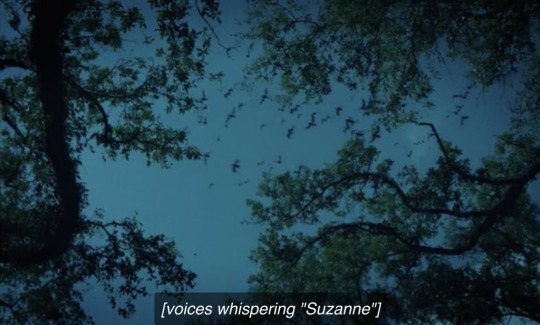
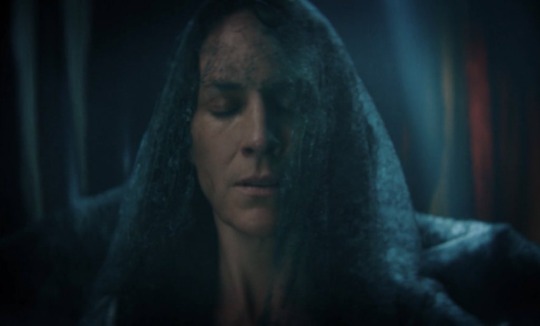
They each have mirroring moments in their journeys. Just like Rowan, Suzanne too was visited by a murder of crows, and the Dark Night of the Soul that Rowan is facing is likened in dialogue to the dark subconscious place Deirdre is trapped. In fact, episode two is titled The Dark Place.
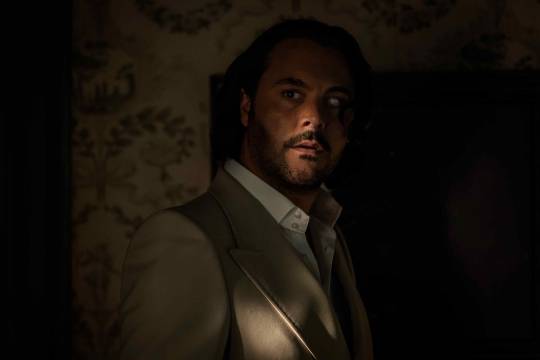

Each of them share the same animus. A being known as Lasher. He is bonded to each of the “Designees”, the matriarchs of the Mayfair family. We’ll delve into him soon enough.
DREAMS AND THE SUBCONSCIOUS
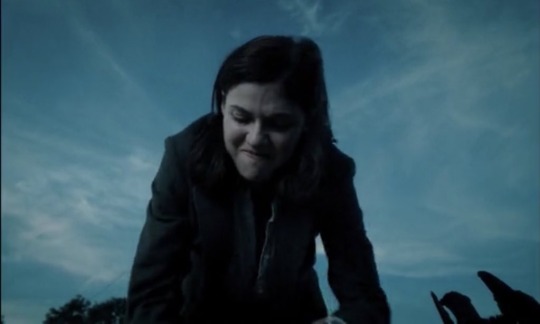
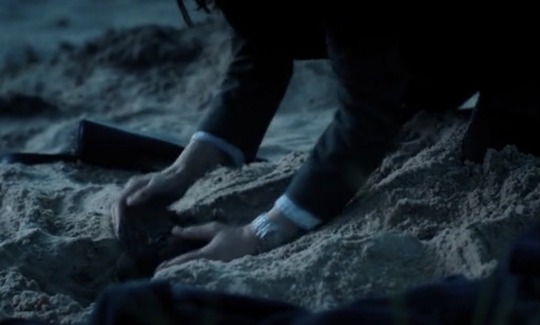
When Rowan uses her powers on the crows, causing a couple of them to fall down dead, she lays them down in her jacket, and drives off to a beach. She then walks to the shore and digs into the sand until she has a hole she can bury the crows in.
After this she takes a pill to force herself to sleep, both exhausted and desperate to flee into oblivion to escape her consciousness as it begins to recognize her shadow. But now as she is laying by the ocean, she is submerged in the unconscious.

She experiences a dream that evokes Cinderella, fairy godmothers, transformation, and spiritual death. She is wearing a shimmering blue gown, and is chasing after Ellie who is leading her somewhere. She runs after her mother, who leads her to The Mayfair House.
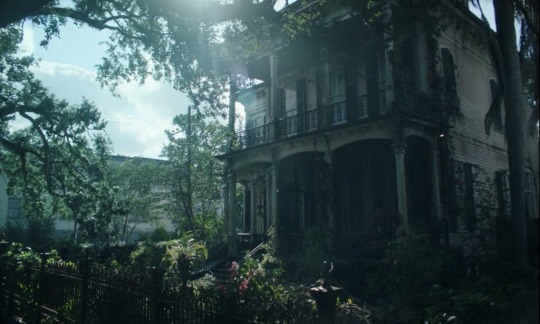
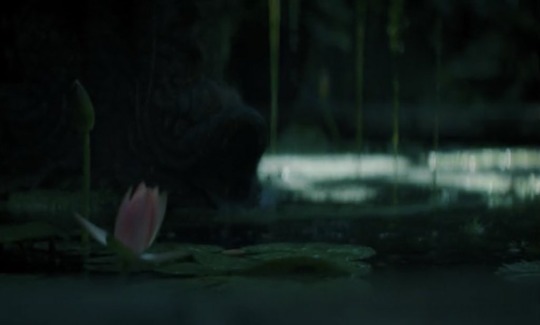
Whenever we see the house, it’s presented as a piece of nature itself, overgrown, hidden among trees, and the sound of water. It is a true representation of the subconscious, the underworld.
A FALSE START AND CLEANSING FIRE
When she finally goes to New Orleans, we think she’s going to get the answers she needs and reconnect with the feminine. However forces intervene and Rowan’s first impression of her Mayfair lineage and the power she possesses is one of fear, in part thanks to Ciprien Grieve. He means well, but his actions and perspective are a literal extension of Ellie as the “too good mother”.
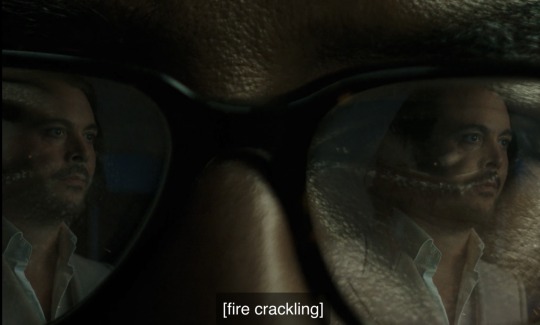
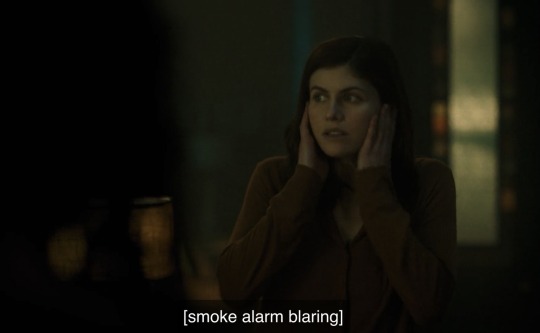
The organization called the Talamasca that Ciprien is part of, actually puts a spell around his building where Rowan is staying. Which acts as a wall or barrier keeping Rowan separated from her Shadow. It was made to keep Lasher out. This is when we have that cleansing flame, as Lasher sets a fire to get the alarms to go off and Rowan to leave the building.
And the first thing she intends to do, is find the Mayfair House which as we know is her subconscious…
End of Part Two
#heroines journey#alchemy#jung’s shadow#jungian archetypes#greek mythology#mythology#folklore#fairytales#mayfair witches#rowan mayfair#rowan x lasher#mythic romance#alchemical marriage#maureen murdock#anne rice#myth and legend#triple goddess#persephone#demeter#hecate#cinderella
20 notes
·
View notes
Text
KH Spec: Princesses of Heart As Stars, part 4/?
For what limited game-time Jasmine has, she certainly makes up for it with respect to the Themes of KH's Princesses & how the chronologically older princesses relate to later ones: this part will largely focus on how Jasmine expands on existing themes amongst the princesses & how she can act as a guide to identifying future "Princesses".
Thusly, Part 4 focuses entirely on Jasmine & how she thematically links the Seven Lights (past, currently known & as-yet-unrevealed) together.
Jasmine
Disney's 'Aladdin' is a film connected to the themes of Wishes & Love by its premise: Aladdin's story is about his dream of reuniting with Jasmine, with whom he has fallen in love, despite their differences in class... and about the Wish-granting Genie acting as his Wingman.
Dreams, Wishes, Love & Miracles: Jasmine fits the pattern.
(She also does a lot of Self-Reflection, no bodies of water required, though her magic carpet ride does depict her interacting with physical water: Jasmine is named for the flower, one bright & vaguely star-shaped, yes I'm kind of reaching with this last idea)
With Jasmine's connection to the preceding Textual Themes of Princesses established, we are able to expand on the Implicit Themes they share: 'Freedom', 'Curiosity' & how both themes tie into 'Responsibility'. The last theme is related less to each heroine within their individial films & more to their collective roles in KH as a whole.
Freedom, Curiosity & Responsibility
Where a dream of "freedom" could only be implied for Snow White, Cinderella & Aurora through their storybook "Happily Ever Afters" due to the IRL society they were contemporary to, Jasmine was able to express her desire for it outright.
Jasmine, like Aurora, has grown up sheltered & removed from wider society. As a Princess, Jasmine feels a Responsibility to know her people and, as a person, she is Curious about the Wider World: Jasmine is the first of these princesses to begin her film with safety of body & mind, enabling her to have Dreams beyond the initial Coming of Age concept of Freedom as simply Leaving Childhood & its (often literal) Trappings Behind.
Freedom Through Love
Jasmine's Freedom is actualized by her gaining the emotional support to confidently stand up to her father (& against the influence of Jafar) and assert her wishes to postpone marriage in order to first explore. Aladdin's Love functions as that emotional support, and Jasmine's Love of Aladdin strengthens her conviction to know the people she will rule.
The Founding Princesses would not have been allowed to openly admit a desire for freedom, instead projecting the concept onto finding their "True Love": conventionally, marriage to a man was the method by which a girl reliant on her childhood home & caregivers could become an adult... in the consenual care of her husband, and he in hers.
Thusly were the Anonymous Princes Charming deployed!
To the Princess Snow White, wanted dead by her royal Stepmpther & found in deathly sleep by her newfound woodland family, an Anonymous Prince Charming to share a duet that enables his later identification (by shared anecdote) as the remedy to Snow White's curse! This Prince then takes the recovering Princess away, presumably in search of a village with an actual medical professional to address any repurcussions of her Resurrection. Unsaid but technically applicable is the importance of a fugitive Princess with a Suddenly Missing Step-Mother, the Acting Queen-Regent, having a Prince to corroborate her Alibi. Said Queen may have been killed via cliff (& angry woodland mob) but with Snow White the legal heir, she was only a Regicide away from being Queen-Monarch.
(i can & would frame the Happily Ever Afters of Cinderella and Aurora with this cracktastic political context but that would be gratuitous to the point being made)
Responsibility: The Prince(ss) & The Pauper
Jasmine & Aladdin are an example of the "Princess & Pauper" dynamic, something prior princesses have touched on but were unable to explore in their original films: Snow White & Cinderella were forcibly made into servants, Aurora's safety required her growing up isolated & far removed from any luxury (the Good Fairies not even using their magic).
The dynamic, typically romantic, serves as a vehicle through which the privileged character (the Prince/ss) can better themself & their people by understanding the circumstances of a Pauper: it is also used as a quick explanation for how the Pauper can be rescued from their desperate situations at all.
This dynamic is explored in several of Disney's Direct-to-Video sequels and some have already had elements used in the KH series already: the premise of KH4, where Sora seems to have forgotten Riku & Riku seeks him out at the encouragement of the Fairy Godmother, somewhat resembles the plot of one of Cinderella sequel film.
Given that the KH series is named for a KINGDOM Hearts, pauper-adjacent heroes developing galactic senses of 'Responsibility' prior to any (additional) Royal Revelations is fairly important. That said, the connection the Seven Lights have to Kingdom Hearts itself is not entirely clear: they act as substitutes in its absence and seem collectively capable of mimicking some of its alleged powers. Kairi's consistent association with stars can, to a degree, inform that the Princesses function as "solar substitutes". That the primary themes (wishes, hopes & dreams; love, miracles & freedom) shared by the Disney Princesses identified as "Lights" are represented with star-like imagery or stars outright is supporting evidence to this premise.
Curiosity: The Wider World(s)
Jasmine's curiosity is a product of her sheltered upbringing, of her boredom for lack of responsibilities despite her evident interest (& talent) in fulfilling them. Curiosity is also a primary feature of any Coming of Age: as the KH series is itself an extended Coming of Age story for Sora, one told in the "Heroine's Journey" framework, it makes sense that many of Jasmine's frustrations and dreams so easily recall those of Sora & Riku (&, uh, Xehanort).
Kairi, notably, does not display these Coming of Age markers until the very end of Melody of Memory.
Through the lens of Jasmine, the Coming Of Age markers common to contemporary fiction can be identified in the Founding Princesses before her: Snow White's curiosity is present in her film, largely as a plot device & method of endearing her to others; Cinderella is too overworked to be truly curious beyond the freedoms & possibilities of having one night off to attend a Ball; Aurora's curiosity foretold her doom by spindle... but it also enabled her meeting with Prince Philip, her (also foretold) "salvation".
Freedom Through Song
Even before Jasmine was allowed to admit her desire for freedom, Disney Princesses were able to allude to their true feelings through song: Snow White's "I'm Wishing"; Cinderella's "A Dream is a Wish Your Heart Makes"; Aurora's "Once Upon a Dream". These songs are thematically connected through the song "Wish Upon A Star", from Pinnochio, and the four songs solidified the symbols the KH series seeks to emphatically connect: Wishes & Stars; Dreams, Love & Miracles; the Human Heart; Coming Of Age; Curiosity & Freedom (with all the Responsibility that entails).
Jasmine's "A Whole New World" draws all the connections of the [Wish Upon A Star] series of songs back to the premise of the KH series itself: exploring new worlds, making wishes & dreams (of the heart) come true, the responsibilities of power & the freedoms made possible by love.
It should, at this point, be noted that despite numbering amongst the Seven Lights herself, Kairi is NOT the KH-original character who best exhibits the themes of the Disney Princesses who have now "Come Of Age" (& so passed on their mantles as Lights): the character most strongly associated with the key themes of the Disney Princesses is, in fact, Riku. Riku has even had his "own" songs, ones with themes consistent with the Princesses discussed thus far: the KH2 song "Passion" & the KH3 song "Chikai". For lyrical analysis on "Chikai", the youtuber TennelleFlowers (AKA the mastermind of the Six Hour Riku Is Gay Video) goes into the song, lyric by lyric.
Given that I have just sneezed for a 4th time in a row, I will conclude this post on Jasmine: Part 5 may end up continuing the ways she thematically ties the Princesses together, leading into a hopefully brief section on Belle (due to Better Analyses existing on how she & her story are consistently used to parallel the relationship of Sora & Riku: I'd specifically recommend reading the "Aitsu" translation essay on Chain of Memories by the SoRiku Ultimania).
#kh meta#disney princess meta#princess jasmine meta#kh theories#princesses of heart#princesses of light#crud i forgot to explain how jasmine acts as a template for who future lights will be#who knew i could write so much about princess jasmine when i nearly fell asleep writing about alice#character study#the heroine's journey#nomura thinks of everything
1 note
·
View note